You are showing your age if you recall the 1950s TV request show called “You Asked For It.”
Today’s request comes from Andrew of Palmyra:
Does anyone have information about the old Palmyra Airport 1937 to 1944? I am an airport planner living in Palmyra, interested in our history.
Google comes through again with Paul Freeman’s website, Abandoned & Little-Known Airfields, which has descriptions, history, and images of over 2,000 vanished or abandoned airfields in all 50 states.
Several aerial photos and maps accompany the fascinating section on Palmyra’s short-lived airport.
Former Town Historian Betty Hahle briefly mentioned “…the little airport on S-17” in her “Yesterday” column in the December 1977 Gaslight News. However, for more information we must dig into the HSR online archive of old hometown newspapers.
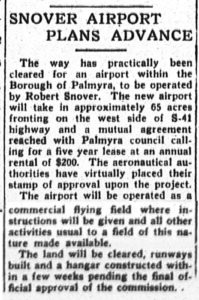
An examination of The New Era reveals this April 11, 1940 piece announcing that “the way has practically cleared for an airport within the Borough of Palmyra, to be operated by Robert Snover.”
Bob Snover served as owner-operator of the airport until his enlistment in the Coast Guard during World War II. He later became a Palmyra councilman and was a mortician with Palmyra’s Snover Funeral Home.
We may infer from a February 1944 report of “a bad field fire north of the former Palmyra Airport” that the airfield had already ceased operation. It confirms Philadelphia’s Frankford Arsenal use of the tract as a proving ground.
The New Era acknowledged in July 1945 that the former airport played a role in the development of a new type of artillery weapon.
In between that first notice in 1940 and the last in 1947, several other articles trace the history of Palmyra Airport. Within a year, it quickly grew from one hangar, one instructor, and one plane to ten hangars, three aircraft, and two full-time instructors.
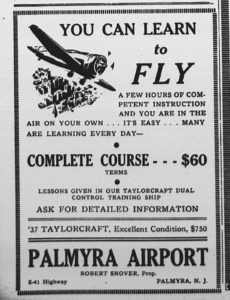
June 1940 saw the start of a flying club in which applicants could, for $2.50, receive lessons with the goal of obtaining a license, and with their paid membership, own an interest in the airport-owned plane.
Opening on the brink of World War Two, the new airport ignited people’s enthusiasm for flying and, in today’s vernacular, went viral a month later as applicants swamped the Civil Aeronautics Authority for a seat in a 72-hour ground training course. One of 225 such projects nation-wide, “the plan was devised to step-up national defense.”
Over one-hundred young men and women attended opening classes at Palmyra High School. By the following September, five of the top-ranking graduates received free government flying scholarships.
Riverton’s Lieutenant Carl Weninger was one course graduate who received his pilot’s license through the program and went on to active duty overseas in the Army Air Corp.
Such a story often poses more questions than it answers. Is there a forgotten cache of photos of the airport or its students and instructors stored in a family album? Did anyone keep a journal or have any mementos survived? Can a pilot steer us to a photo of a Taylorcraft BC (BC-50) dual-control trainer with 50HP Lycoming engine as described in the articles? Does anyone recall the secret weapons testing on the grounds of the former airport? Descriptions of explosions rocking Palmyra and Riverton for months must have kept it from being secret for very long.
If you can add to this record, please contact the Society. – JMc
A Chronology of Newspaper Clippings
PS: Paul Freeman also profiled the Moorestown airfield.
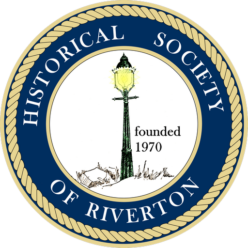

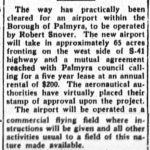


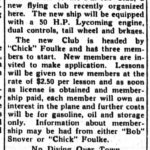
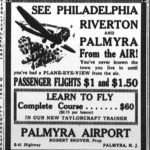





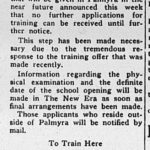

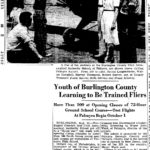


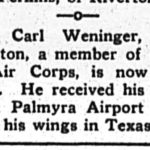
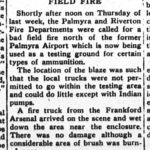


Should I find any photos of the airport in my photo album research, I will make sure to send them to you.
Gwen (Snover) Leys